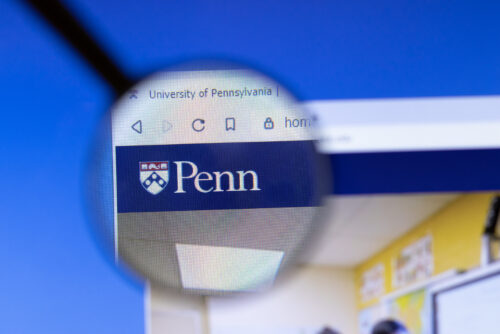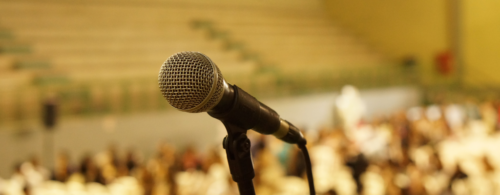It’s accepted as obvious that fundraising is harder thanks to the pandemic. That may not be true, though—here’s why.
There’s a certain type of falsehood that, for whatever reason, skips right past the “empirical analysis” phase and straight to “truism” status. You’ve probably heard—maybe even said—this one: “Old-fashioned snail mail can’t work. I NEVER respond to anything I receive in the mail.” I’ve heard that coolly asserted more times I can count … and yet, the data don’t bear it out.
Here’s another one: “Fundraising is undoubtedly more challenging in the current climate.” I submit that this, too, is a truism that is false. And I suspect that this year’s Giving USA Report will confirm my hunch, but until that beloved ritual of professional fundraisers is unveiled, let’s examine a few reasons why that truism may not be so true.
#1: The pandemic has affected the “donor class” less.
This is of course a sad reality, but a reality nonetheless. The pandemic has disproportionately affected those who were already disadvantaged. In many cases, the “donor class” has actually improved financially during the pandemic. Given this—and given that charitable giving is fundamentally emotional and relational rather than rational and transactional—it stands to reason that such donors would be even more motivated to give generously in this moment of greater need than in a “normal” year.
#2: The pandemic has underscored the importance of nonprofit missions.
When fundraisers work to articulate their mission, vision, or value proposition, they often ask themselves some version of this question: “If our organization ceased to exist tomorrow, what would change in the world?” The pandemic has made this question far less hypothetical. Organizations that have defined mission statements and can clearly articulate what they are doing to fulfill them have been able, not only to weather the storm, but to thrive—even if that mission is not directly related to ameliorating the effects of the pandemic. These organizations have shown their supporters the value of their mission in a moment of crisis.
#3: The pandemic has exacerbated the atomism that has beset our country, making our fundamental need for belonging in a community even more challenging to satisfy.
As this publication frequently details, the desire for belongingness is perhaps the strongest motivator of charitable giving. In a landscape where many opportunities to experience “belonging” are either completely unavailable or severely diminished, the allure of joining or renewing one’s commitment to a community that offers such opportunities is substantially stronger. And, insofar as charitable giving strengthens a person’s relationship to a community, charity has an added allure and an added appeal now. (As an aside, this view contradicts the notion that asking someone for a donation is equivalent to cashing out relational capital that you’ve built up with a donor. In other words, the fundraiser’s goal is to engender enough social capital, and then to cash that in for a donation—actual capital. This is perhaps another false “truism” of charitable giving.)
Moreover, the pandemic has illuminated how rich certain associational communities are. At my school, for instance, donor engagement and investment have increased over the past year. While I would love to chalk this up to my magnetic personality and fundraising expertise, I suspect that the pandemic is more responsible for this uptick in giving.
A PLACE FOR COMMUNITY
For us, it all started with our school leadership’s commitment to the value of in-person instruction—life-on-life impact, as we call it—and, consequently, their commitment to developing a comprehensive reopening plan for the fall term. By developing and clearly communicating this plan to teachers, we received their full buy-in, which then instilled confidence in school parents and the broader community that we would be safe and successful in our reopening.
This community solidarity makes my job easy. Our supporters understand the school’s value not by any brochure or proposal I’ve put together but by witnessing it in action, in the crucible of a school reopening during a worldwide pandemic. As a result, my role becomes identifying the particular passions and interests of these supporters and then matching them to projects that we are undertaking as a school. This, I can do.
There’s undoubtedly a bit of a “uniting against a common enemy” effect in all of this. For this reason, I would contend that for organizations that have experienced a surge in community engagement and donor investment, the real challenge will come when this pandemic starts to subside. As the community comes down from the high of facing a “common enemy,” we will have to work harder to connect people to our mission and involve them in our work.
This is a challenge we are already preparing for here at my school, and not just with charitable giving. This past fall, when we accepted students whose primary reason for enrolling was that we would be open in-person, we made a calculated bet that being immersed in our robust community and excellent educational program for a year would convince them to stay after the pandemic subsides. In other words, we had a chance to showcase our mission in a way that we would not have had the pandemic not sidelined so much in the past year. Of course, we had to deliver, and I think we have.
But we know that when the need for our school community becomes less “obvious,” we’ll need to begin again articulating that need and why our school and our mission matters. What stands out to me, though, is how the pandemic has not inhibited the work of raising funds, but enabled it.
Is the “fundraising has to be more challenging right now” truism a crutch that you’re leaning on right now? And what other “truisms” are holding us back as we seek to raise support for the manifold worthwhile missions that constitute American civil society?
Carter Skeel serves as Director of Development for Delaware County Christian School in Newtown Square, PA.






